![]()
![]()
![]()
Use LEFT and RIGHT arrow keys to navigate between flashcards;
Use UP and DOWN arrow keys to flip the card;
H to show hint;
A reads text to speech;
63 Cards in this Set
- Front
- Back
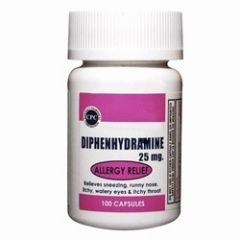
BRAND NAME
diphenhydramine HCl |
Benadryl
|
|

CLASS
diphenhydramine HCl |
antihistamine, anticholinergic
|
|
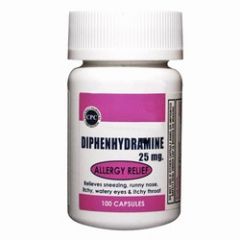
MECHANISM OF ACTION
diphenhydramine HCl |
Blocks cellular histamine receptors, but does not prevent histamine release; results in decreased capillary permeability and decreased vasodilation, as well as prevention of bronchospasm.
Has some anticholinergic effects. |
|

INDICATIONS
diphenhydramine HCl |
Anaphylaxis (2nd line)
Phenothiazine reactions (extrapyramidal symptoms) Antiemetic |
|
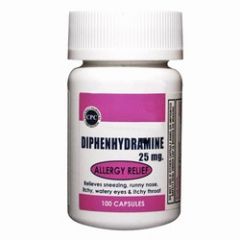
CONTRAINDICATIONS
diphenhydramine HCl |
Known hypersensitivity to diphenhydramine or drugs of similar chemical structure.
Newborn or premature infants; nursing mothers. Considerable caution in patients with glaucoma, acute narrow angle; stenosing or obstructive diseases of the GI tract; bronchial asthma; hyperthyroidism; cardiovascular disease or HTN; age greater than 60 years (all relative benefit vs. risk). |
|

ADVERSE REACTIONS
diphenhydramine HCl |
CV: Hypotension, palpitations, arrhythmias, hemolytic anemia.
RESP: Anaphylaxis, thickening of bronchial secretions, tightness in chest, wheezing, nasal stuffiness. CNS: Sedation, visual disturbances, seizures. GU/GI: Urinary frequency or retention; vomiting. CHILDREN: In children, may cause paradoxical CNS excitation, seizures, palpitations, thickening of bronchial secretions. |
|
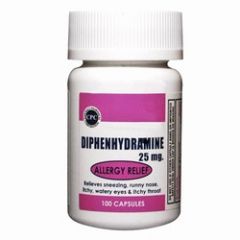
ADULT DOSAGE
diphenhydramine HCl |
ANAPHYLAXIS: 25-50 mg slow IV push or deep IM.
EXTRAPYRAMIDAL SYMPTOMS AND ANTIEMETIC: 10-50 mg IV or deep IM, dose individualized according to the needs and pt response. |
|
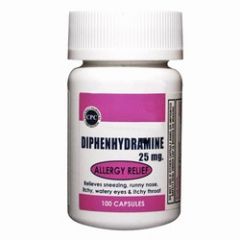
PEDIATRIC DOSAGE
diphenhydramine HCl |
1.0-1.25 mg/kg slow IV push; may also be given deep IM.
|
|

BONUS
diphenhydramine HCl |
Not used in newborn or premature infants; used in pregnancy only if clearly needed.
In anaphylaxis, used as a 2nd line treatment after epi and steroids. |
|
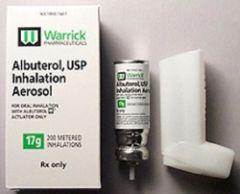
BRAND NAME
albuterol sulfate |
Proventil, Ventolin
|
|
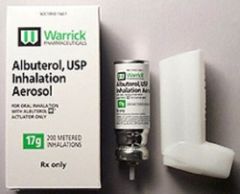
CLASS
albuterol sulfate |
sympathomimetic, bronchodilator
|
|
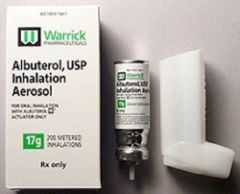
MECHANISM OF ACTION
albuterol sulfate |
β antagonist (primarily β2); relaxes bronchial smooth muscle, resulting in bronchodilation; also relaxes vascular and uterine smooth muscle; decreases airway resistance.
|
|
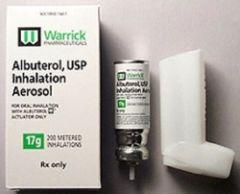
INDICATIONS
albuterol sulfate |
Treatment of bronchospasm
|
|
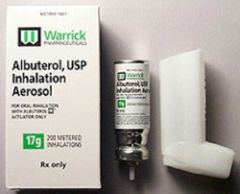
CONTRAINDICATIONS
albuterol sulfate |
Synergistic with other sympathomimetics.
Use caution in pts with diabetes, hyperthyroidism, and cerebrovascular disease. |
|

ADVERSE REACTIONS
albuterol sulfate |
CV: Dysrhythmias, tachycardia (with excessive use), peripheral vasodilation.
RESP: Bronchospasm (rare paradoxical with excessive use). CNS: Tremors, nervousness GI: N/V ENDOCRINE: Hyperglycemia |
|
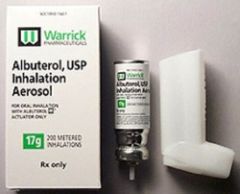
ADULT DOSAGE
albuterol sulfate |
Give 2.5 mg of premixed solution for inhalation (0.083%) via SVN, or in-line with a ventilatory device. Repeat doses per medical control.
|
|
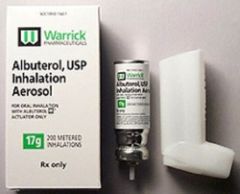
PEDIATRIC DOSAGE
albuterol sulfate |
For children < 40 lbs., administer half of 0.083% premixed solution; add 1-1.5 mL NS to make 2.5-3 mL treatment administered via SVN, O2 mask or in-line with a ventilatory device. Repeat doses per medical control.
|
|
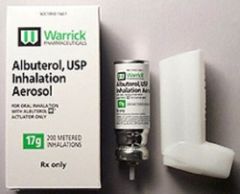
BONUS
albuterol sulfate |
ROUTES OF ADMINISTRATION
Nebulized, mouth piece or in-line via mask Inhaler, patients own In-line with ET tube/nasotracheal tube SPECIAL NOTES Must be sulfite-free |
|
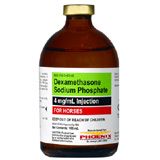
BRAND NAME
dexamethasone sodium phosphate |
Decadron
|
|
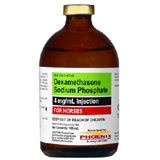
CLASS
dexamethasone sodium phosphate |
synthetic adrenocorticoid/glucocorticoid with a predominance of glucocorticoid action, anti-inflammatory.
|
|
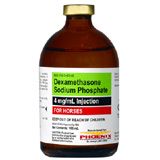
MECHANISM OF ACTION
dexamethasone sodium phosphate |
Improves lung function and myocardial performance
Decrease in pulmonary edema Relaxation of bronchospasm |
|

INDICATIONS
dexamethasone sodium phosphate |
Reactive airway disease: Acute exacerbation of bronchial asthma.
Anaphylaxis. Cerebral edema (non-traumatic) |
|
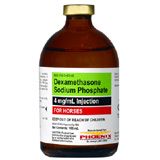
CONTRAINDICATIONS
dexamethasone sodium phosphate |
Systemic fungal infections.
Hypersensitivity to any component of dexamethasone, including sulfites. Preterm infants. |
|
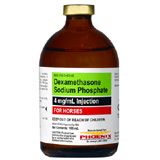
ADVERSE REACTIONS
dexamethasone sodium phosphate |
Sodium retention, fluid retention, potassium loss, hypokalemic alkalosis, HTN, convulsions, hyperglycemia, myocardial rupture following recent MI.
|
|
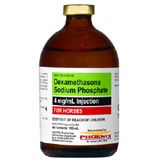
ADULT DOSAGE
dexamethasone sodium phosphate |
REACTIVE AIRWAY DISEASE, ANAPHYLAXIS: 8-24 mg IV/IO or deep IM.
CEREBRAL EDEMA: 1-5 mg/kg IV/IO or deep IM. |
|

PEDIATRIC DOSAGE
dexamethasone sodium phosphate |
REACTIVE AIRWAY DISEASE, ANAPHYLAXIS: 0.25-0.5 mg/kg IV/IO
CEREBRAL EDEMA: 0.5-1.5 mg/kg IV/IO |
|
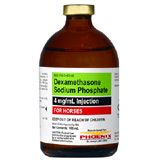
BONUS
dexamethasone sodium phosphate |
Dexamethasone is not compatible with benadryl or versed in IV tubing.
|
|
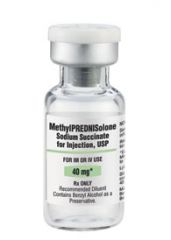
BRAND NAME
methylprednisolone sodium succinate |
Solu-Medrol
|
|
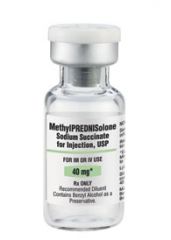
CLASS
methylprednisolone sodium succinate |
corticosteroid, glucocorticoid, steroid, anti-inflammatory
|
|
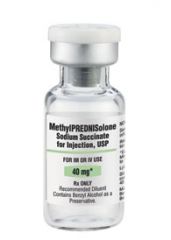
MECHANISM OF ACTION
methylprednisolone sodium succinate |
Enters target cells and causes many complex reactions that are responsible for its anti-inflammatory and immunosuppressive effects; thought to stabilize cellular and intracellular membranes.
|
|
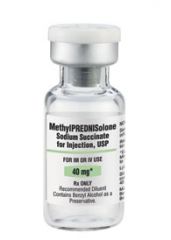
INDICATIONS
methylprednisolone sodium succinate |
Reactive airway disease: Acute exacerbation of emphysema, chronic bronchitis, asthma
Anaphylaxis Burns potentially involving the airway |
|

CONTRAINDICATIONS
methylprednisolone sodium succinate |
Preterm infants
|
|
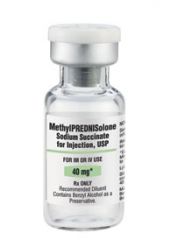
ADVERSE REACTIONS
methylprednisolone sodium succinate |
None from a single dose.
|
|

ADULT DOSAGE
methylprednisolone sodium succinate |
REACTIVE AIRWAY DISEASE, ANAPHYLAXIS, BURNS POTENTIALLY INVOLVING THE AIRWAY: Usual dose 125 mg slow IV bolus (much larger doses can be used).
|
|
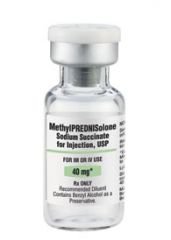
PEDIATRIC DOSAGE
methylprednisolone sodium succinate |
REACTIVE AIRWAY DISEASE, ANAPHYLAXIS, BURNS POTENTIALLY INVOLVING THE AIRWAY: 2-4 mg/kg slow IV bolus.
|
|
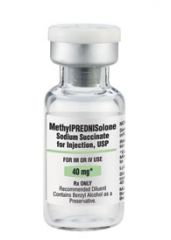
BONUS
methylprednisolone sodium succinate |
ADULT DOSAGE CONTINUED - ACUTE SPINAL CORD TRAUMA: Should be within 6 hours of insult and pt meets criteria, inital bolus of 30 mg/kg IV administered over 15 minutes; bolus followed by a 45 min rest period, then a 23-hour continuous infusion of 5.4 mg/kg/hr.
SPECIAL NOTES: Use for spinal cord trauma is limited to prehospital providers that have completed a special training curriculum in accordance with their medical control authorities. PROPER administration of methylprednisolone for spinal cord trauma is imperative. INFUSIONS: An infusion pump is required for continuous infusions of corticosteroids during inter-facility transports; a minimum of microdrip tubing is required for field use if administering loading dose therapy for spinal cord trauma. |
|
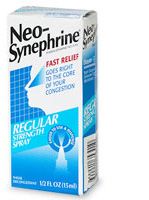
BRAND NAME
phenylephrine nasal spray 0.5% |
Neo-synephrine Nasal Spray 0.5%
|
|
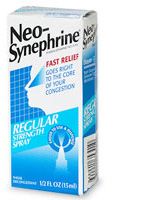
CLASS
phenylephrine nasal spray 0.5% |
topical vasoconstrictor
|
|
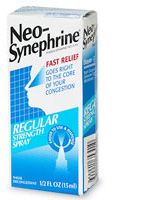
MECHANISM OF ACTION
phenylephrine nasal spray 0.5% |
Stimulates α-receptors in the blood vessels of the nasal mucosa which causes their constriction and thereby decreases the risk of nasal bleeding.
|
|

INDICATIONS
phenylephrine nasal spray 0.5% |
Facilitation of nasotracheal intubation.
|
|
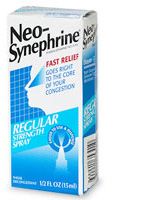
CONTRAINDICATIONS
phenylephrine nasal spray 0.5% |
Known allergy to medication.
|
|
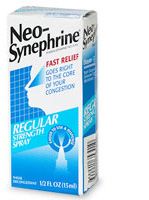
ADVERSE REACTIONS
phenylephrine nasal spray 0.5% |
(rare with single dose, rarely absorbed systemically from nasal instillation)
CV: HTN, palpitations CNS: Tremors |
|
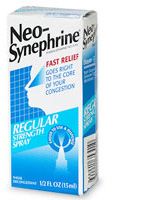
ADULT DOSAGE
phenylephrine nasal spray 0.5% |
2-4 sprays in each nostril before attempting tube insertion.
|
|
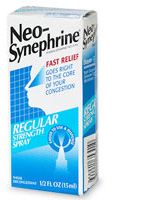
PEDIATRIC DOSAGE
phenylephrine nasal spray 0.5% |
None.
|
|
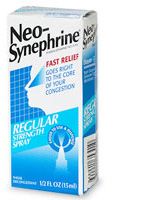
BONUS
phenylephrine nasal spray 0.5% |
SPECIAL NOTES:
Single patient use only. Air or strong light causes potency loss; do not use solution if brown in color or precipitate is in the bottle. |
|

BRAND NAME
furosemide |
Lasix
|
|
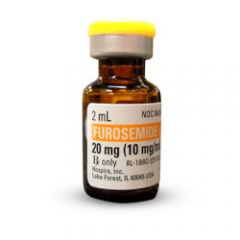
CLASS
furosemide |
Loop diuretic
|
|
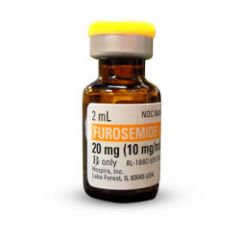
MECHANISM OF ACTION
furosemide |
PHARMACOLOGIC: Inhibits electrolyte reabsorption in the ascending Loop of Henle. Promotes excretion of sodium, potassium and chloride. Vasodilation increases venous capacitance and decreases afterload.
CLINICAL: Diuresis. |
|

INDICATIONS
furosemide |
Pulmonary edema
CHF |
|

CONTRAINDICATIONS
furosemide |
Anuria (relative)
Hypovolemia Hypotension |
|
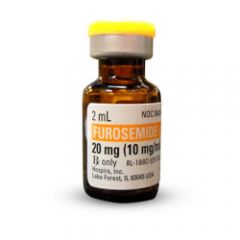
ADVERSE REACTIONS
furosemide |
May exacerbate hypovolemia
Hyperglycemia (due to hemoconcentration) Hypokalemia May decrease the response to pressors |
|

ADULT DOSAGE
furosemide |
ON ORAL FUROSEMIDE THERAPY: Consider initial dose of 2 times daily oral dose; if no effect in 20 min may double inital dose.
NOT ON ORAL FUROSEMIDE THERAPY: 0.5-1 mg/kg to a maximum of 2 mg/kg (usually 20-40 mg) IV/IO slowly. |
|
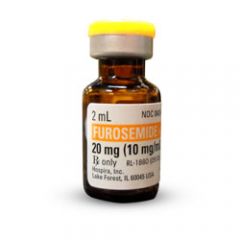
PEDIATRIC DOSAGE
furosemide |
1 mg/kg IV/IO slowly
|
|
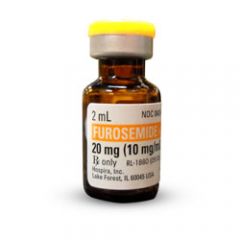
BONUS
furosemide |
Ototoxicity and resulting deafness can occur.
Since furosemide is a sulfonamide derivative, it may induce allergic reactions in pts with sensitivity to sulfonamides (sulfa drugs). |
|
|
BRAND NAME
ipratropium bromide |
Atrovent
|
|
|
CLASS
ipratropium bromide |
anticholinergic, bronchodilator
|
|
|
MECHANISM OF ACTION
ipratropium bromide |
Anticholinergic (parasympatholytic) agent appears to inhibit vagally-mediated reflexes by antagonizing the action of acetylcholine, the transmitter released from the vagal nerve.
|
|
|
INDICATIONS
ipratropium bromide |
Treatment of bronchospasm associated with COPD (emphysema and chronic bronchitis).
To be used either alone or in combination with Albuterol. |
|
|
CONTRAINDICATIONS
ipratropium bromide |
Ipratropium bromide is contraindicated in known or suspected cases of hypersensitivity to ipratropium bromide or to atropine and its derivates.
PRECAUTION: Should be used with caution in pts with narrow angle glaucoma. |
|
|
ADVERSE REACTIONS
ipratropium bromide |
RESP: Coughing, sputum increased
CNS: Dizziness, insomnia, tremors, nervousness GI: Nausea |
|
|
ADULT DOSAGE
ipratropium bromide |
Give 500 mcg in 2.5 mL NS (1 unit dose vial) via SVN or in-line with a ventilatory device. Repeat according to medical control preference.
May mix one unit dose vial of ipratropium bromide with one unit dose vial of albuterol. |
|
|
PEDIATRIC DOSAGE
ipratropium bromide |
Not used pre-hospital for peds.
|
|
|
BONUS
ipratropium bromide |
Anticholinergics produce preferential dilation of the larger central airways, in contrast to beta agonists, which affect the peripheral airways.
May be more effective used in combination with beta agonists. Should be kept out of light in a foil pouch and avoid excessive humidity. |

